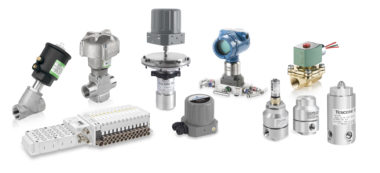Technological solutions and digital transformation have proven to accelerate hydrogen production and use while helping to solve the challenges that companies across the value chain are facing. Even though many projects have already been launched, the infrastructure and processes required to support the transition to green hydrogen still need to be developed and scaled.
In this article, Successfully Scaling Up Green Hydrogen Across the Value Chain, Nicolas Marti, business development manager in alternative fuel and combustion at Emerson, goes into detail about how the success of the green hydrogen industry depends on reliable production, storage, transportation, and process across the supply chain.

Production
…The process of producing hydrogen using water and electricity is called electrolysis. Electricity breaks water down into its base elements, hydrogen and oxygen, in a unit called an electrolyzer. These electrolyzers can range in size from small devices to large-scale, central production facilities. Electrolyzer components need to be reliable and built for hazardous environments to keep people and property safe.
Because electrolyzer components need to be reliable and built for hazardous environments to keep people and property safe, there is high importance to work with an expert supplier equipped with a wide range of measurement, control, and electrical equipment.
Conversion, Storage, and Transportation
In order to ensure systems, operate safely, working with hydrogen requires vigilant control.
…With pressures of up to 15,000 psi in the value chain, hydrogen must be effectively, efficiently, and safely controlled. There can’t be any inboard or outboard leaks due to integrity issues with static or dynamic seals.
Mobility

ASCO™, Rosemount™ and TESCOM™ components from Emerson, used for measurement and control processes throughout the hydrogen fuel value chain.
The use of hydrogen-powered vehicles is on the rise and the fuel cell is an essential part of the transition.
…A key element of the transition to hydrogen-powered vehicles is the fuel cell. Fuel cell power systems can be used to power passenger cars, commercial vehicles, and more. Once hydrogen-powered vehicles populate the road, drivers will need to fuel them. As fueling stations transition to green hydrogen, they face several challenges, such as sustainability, safety, and maintenance. First, there’s the concern of accurately monitoring the hydrogen flow to ensure customers dispense the right amount of fuel, every time, quickly and safely.
Making real progress while reducing risks will be easier with a scalable approach. Read the article to learn the first step to making sustainable success.
Discover the first step to sustainable success in the in-depth article here.
For more information on hydrogen generation visit our hydrogen fuel production webpage.





